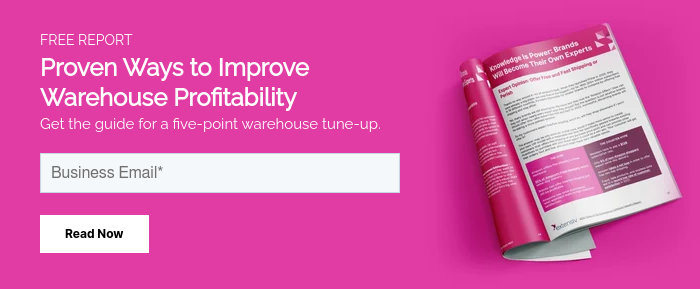These are times of rapid evolution for the U.S. and the global economy. The COVID-19 pandemic became the catalyst for one of the most extensive series of challenges that our supply chains have ever faced. Increased consumer demand mixed with labor shortages amidst a global pandemic created the perfect cocktail for trouble. Despite the pandemic winding down, the issues that it has birthed do not seem to be slowing down. This raises the question, if the pandemic is slowing down, why aren't the supply chain issues following suit? As is the case in many situations, the answer to this question is multifaceted and complex. This requires a deeper dive into the root of the problem to give us a better understanding of how to deal with the effects of these issues on 3PL warehousing.
What are supply chain issues?
So, what are these supply chain issues everyone is talking about on the news? There are three primary issues that supply chains across all industries are facing: labor shortages, equipment availability, and global bottlenecks.
Labor Shortages: As we see the world slowly recovering from the pandemic, we are simultaneously seeing how the challenges it created translate into a new way of operating. A perfect example of this is the excessive demand for labor outweighing the supply. Across the globe, we are seeing a phenomenon known as the "Great Attrition," which harms companies' retention of talented employees. This issue is especially prevalent in the transportation and logistics sector. This retention rate challenge and higher labor costs create significant detrimental effects across the entire value chain.
Equipment availability: Another issue affecting the supply chain is equipment availability. Across the various supply chains, equipment is in short supply. This exacerbates all the existing issues and creates a few of their own. Without the proper equipment, businesses cannot produce to meet consumers' higher demand for their products. Higher material prices are another contributor making the feasibility of producing equipment and machinery immensely more complicated. The availability of equipment puts severe strain on the supply chain, especially as demand for equipment manufacturing is rebounding at a quicker rate than the supply of it.
Bottlenecks: Throughout the last few years, we have seen articles, videos, photos, and many other examples of bottlenecks, primarily in shipping ports. This struggle for shipping capacity has been a hallmark of the last two years, but we now see these capacity and bottleneck issues shifting inland. It is important to note that the three significant supply chain issues feed into each other. An example of this is, as it relates to bottlenecks, the lack of transportation equipment which is crucial for moving goods leading to these products being tied up for weeks. This is leading to lengthy backups at inland distribution hubs. While this inland congestion may be less visible than the backup of container ships across essential shipping ports, they are just as disruptive for supply chain logistics.
These three issues are also perfect examples of the "bullwhip effect." This phenomenon can best be described as minor consumer demand fluctuations creating progressively larger effects in demand throughout the various supplier levels i.e., manufacturers, distributors, wholesalers, raw materials suppliers, etc.).
Effects on 3PL Warehouses
With this new understanding of the current issues facing the supply chain, we now need to ask how this affects 3PL warehouses and how we can leverage our capabilities to address these issues.
Warehouse managers and 3PL managers are asking themselves these exact questions. To address labor shortages, managers may need to adapt their existing space and implement automated robotics solutions to bypass part of the problem they face. The rising transportation costs have also led to a rise in leasing activity. Companies are relying on expanding warehouse space to lower the need for long-distance shipping, thereby reducing their shipping costs. The way companies are going about attaining more space is by going up. With the current demands of various companies, it is practically impossible to acquire new space, but it is possible to build up. We are seeing a drive in elevated mezzanine and racking configurations. This is not the only change happening to utilize more space; distribution centers are being compressed through the realignment of materials using narrow aisles.
Changes in space configuration are just one aspect of 3PL warehousing that is evolving. Another substantial change we see across the industry is the reliance on warehouse management systems. Warehouse Management Systems (WMS) is fulfillment software that aids the function of 3PL warehouses. This software solution provides visibility into daily warehouse operations and allows for better management of inventory, fulfillment services, data, billing, etc. This technology is extremely useful to maximize labor and space by using data to optimize resources within a warehouse. WMS maximizes operational efficiency, which is essential in dealing with supply chain disruptions. There is no longer a question as to whether to integrate WMS solutions. The question now is how.
Supply chain disruptions have also led to the creation of 4PLs. A 4PL is like a 3PL in that it manages transportation, warehousing, and distribution, but where it differs is that it, as described in Supply Chain Dive, includes “carriers, warehouses, reverse logistics and more, breaking down silos and providing end-to-end visibility and transparency.” 4PLs are in essence the next logical evolution of traditional 3PLs.
Another effect that supply chain disruptions have led to is a change in hiring practices. Younger generations of workers are more goals and values-oriented, making it essential for hiring 3PLs to rise to the changing concerns of their future workforce. By evolving the hiring process through sharing company values on social media, connecting potential employees with hiring managers, and creating a more technologically compatible application process, 3PLs can combat the growing threat of labor shortages and the "Great Attrition."
Conclusion
Throughout the last few years, 3PLs have evolved tremendously. 3PLs are no longer mere service providers but are now enablers making sure that customers get their goods delivered. The recent supply chain issues have made the relationship between 3PLs and shippers of the utmost importance in overcoming problems and creating robust logistics sourcing strategies. These relationships are strengthened through adaptation and boldness to adopt new logistics sourcing strategies tailored to the new world we operate in. If you are looking for more information on how to transform your business download our whitepaper, “The Future of Omnichannel Fulfillment.”








